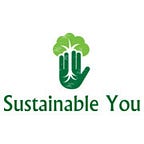What Story Are We Writing?
plastic or power
The Story of Plastic
Plastic is the poster child of our modern world.
Our quality of life has dramatically improved since its inception, but at the same time, the health of our world is drastically declining just as quickly because of our “addiction to plastic,” as The Story of Plastic puts it.
The Story of Plastic is a segment of a larger project, The Story of Stuff, which explains the root of a broken economic system: a linear model perpetuated by manufactured demand and a consumerist culture that has enabled corporations to grow without being accountable to our global community.
The Status Quo
Watching a documentary like this can make us think about how we got here in the first place, and if there can be any change.
Many of us go about our busy days and drink from a plastic water bottle.
It’s convenient and every place sells it.
Many of us also know at this point, that there’s a better way.
We could just simply bring a reusable water bottle, but why is it that many of us still don’t sustain this habit?
The Culture
Big corporations influence almost everything in our world, and this of course includes our consumer behavior.
Our society has been programmed to buy, buy, buy!
Most of the time, it’s for things we don’t need, and usually to address deeper issues like an imbalanced emotional state or to get a dopamine rush.
How did we get here?
Every minute, a garbage truck’s worth of plastic is being dumped into our oceans according to the World Economic Forum. By 2050, there could be more plastic than fish in the world.
Let’s go back in time now.
World War II ended in 1945, and the US economy was booming.
Americans were spending again after a recession, and mostly on new televisions, modern appliances, the latest cars, and larger homes. By 1960, the United States became the world’s economic power.
…underconsumption as a root cause of the Great Depression, they called for the construction of a consumerist political economy and pronounced America to be entering into a new era defined economically by consumption and driven politically by the might of organized consumers” — Buying Power, a History of Consumer Activism in America, Lawrence B. Glickman, 2009
Victory Gardens
Before this growth, our government actually encouraged the people to contribute to the war effort by consuming less and producing more.
An example of this were seeds being handed out to encourage victory gardens.
This was an initiative to boost morale while conserving resources. Having a victory garden was seen as a patriotic duty.
It proved to be a success, supplying over 40 percent of the US produce supply, with enough to send overseas to support the war effort.
Victory gardens totaled almost 20 million in 1944 with a population of 132 million (15%).
In 2013, the US recorded 37 million gardens out of a population of 316 million (12%).
What’s interesting is that it’s only in more recent years that there has been a resurgence in garden cultivation and there’s a noticeable historical trend that when there are economic difficulties, more people garden.
Are we really growing?
So what happened when there hasn’t been economic difficulty as most organizations measure it?
As corporations that benefited from the war economy had to pivot their business models to agriculture and manufacturing consumer goods, smaller farmers gave up their land and home gardeners stopped growing their own food to buy more convenient produce and products.
An example is Monsansto, who encouraged the development of nuclear weapons during WWII and then transitioned into making laundry detergent, polyurethanes, DDT, and eventually Agent Orange and RoundUp in the 1970s.
Whether it’s because of plastic or synthetic pesticides, we can choose to acknowledge that the economic growth we’ve seen has come at a cost.
We can choose to acknowledge that the companies that helped us expand in troubling times may have instigated even more troubling times in different ways to benefit from.
And we can choose to awaken our own power to change ourselves, the companies we work with and buy from, and the world we and our children live in for decades, and hopefully centuries to come.
To do what has to be done, there is no blame we should put on our past, or any powers that be, economic, political, or otherwise.
Sure, 100 companies are responsible for 71 percent of greenhouse gas emissions.
But is it not so that every corporation and every government is made up of individual people, all with purposes and a unique consciousness?
The Story of You
The issue we face is deeper than plastic pollution and greenhouse gas emissions, however stark it is.
This is a call for evolution in how we behave.
This is a call for an evolution in how we think, feel, speak, and live.
How do we show up in the world? What is the society we are creating? Who are we as a species?
We’ve forgotten about our neighbors. From the ones next door that we could start a garden with, to the ones overseas who are dealing with plastic waste washing up on their shores.
Our story with the earth has a past, and it is unclear if this story has a future.
But we have time, and we have a responsibility.
And we’ve found that one of the best ways to honor it is to step into what your impact is, negative or positive, and reflect on what you truly want your personal impact to be.
We’re here to walk with you, hand-in-hand.
Sources
Sundin, Sarah. Author
Lingeman, Richard R. Don’t You Know There’s a War on? The American Home Front 1941–1945
National Garden Association
Garden to Table: A 5-Year Look at Food Gardening in America, 2014
